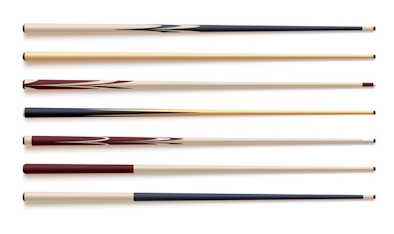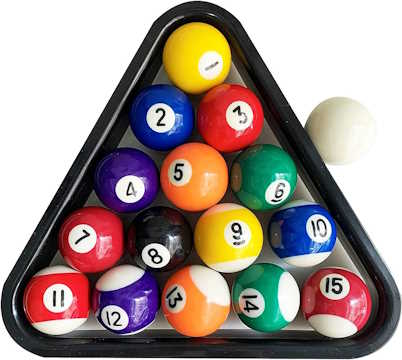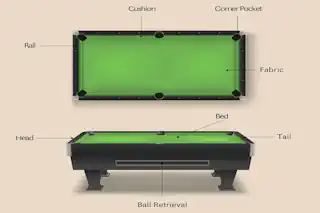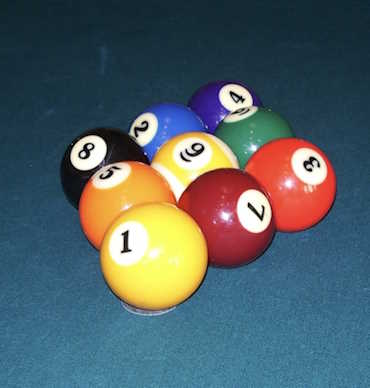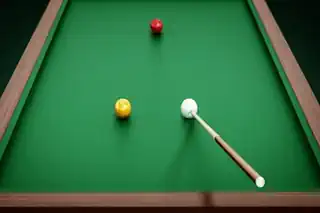Mastering One Pocket Billiards: The Ultimate Guide to a Sophisticated Cue Sport
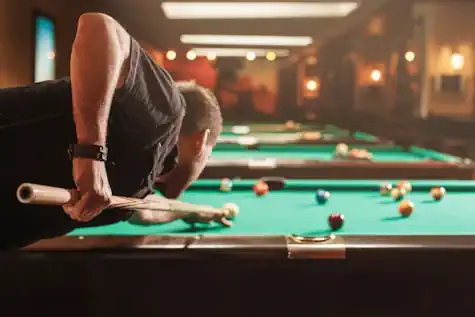
Welcome to the beginners’ guide on how to play One Pocket Billiards, the refined and strategic variant of billiards. One Pocket requires a high degree of skill, tactical thinking, and precision. Whether you’re a billiards aficionado or a novice cueist eager to learn a new form of the game, this guide will help you understand the nuances of One Pocket. By following these instructions, you’ll be on your way to becoming a master of this challenging and rewarding cue sport.
The Essence of One Pocket Billiards
In One Pocket, the name of the game is precision. Imagine the entire table divided into four quadrants, with each player having a designated pocket to sink their balls. The objective of winning one pocket is to score by pocketing more balls into your pocket than your opponent. While this may sound simple, the real challenge lies in the strategic nuances that unfold with each shot.
One Pocket is a game of patience and positioning; no shot is without strategic importance. It’s often compared to chess, requiring players to think several moves ahead. This guide will lead you through the essential steps to understand and play One Pocket like a veteran.
Setting Up the Table
Before the cue balls start moving, you need to set the stage. The standard One Pocket table is typically a 10-foot long pool table with the same width as a standard 9-foot table. Here’s how you set up the table:
- The game can be played with a full rack of 15 balls, with the leading player choosing who sets up the initial configuration.
- You’ll then create a diamond-shaped rack of 15 balls at the foot of the table, with the apex ball positioned as closely to the side pocket as possible without actually touching it.
- Each player selects one of the foot corner pockets on the opposite side of the table as their regulating pocket.
The setup is crucial as it can provide a tactical advantage or disadvantage based on the layout of the balls and the proximity to the player’s pocket. It’s akin to the opening move in a game of chess—wise decisions now can lead to an advantageous mid-game.
Basic Rules and Gameplay
Now that the table is set, it’s time to understand the rules and gameplay of One Pocket.
The game starts with the first player to ‘win’ the break, determining who will strike the first ball. From here, the following are key rules and guidelines:
Pocketing the Balls
The objective is to pocket balls into your designated pocket. Scoring a legal shot rewards one point for each pocketed ball.
Foul Play
Common foul plays include:
- A scratch, where the cue ball is pocketed
- Not hitting any balls
- Hitting the opponent’s prescribed pocket
- Jumping the balls
- Knocking off the table anything that is not a ball, etc.
When a foul is committed, the opponent has the option to reposition the cue ball anywhere on the table or to shoot from where it landed after the foul.
Winning the Game
The game continues until one player legally pockets a certain number of balls, typically 8 or more depending on the match and agreed-upon rules, and achieves this difference of two or more points over their opponent.
Winning a One Pocket game is not just about pocketing the balls; it’s about controlling the game and the placement of the balls. You can win by simply running the majority of the balls toward your pocket, but the most skilled one pocket players win by forcing their opponents into a defensive posture and capitalizing on the strategic mistakes of their rivals.
Essential Techniques for One Pocket
To become proficient at One Pocket, you must master several key techniques.
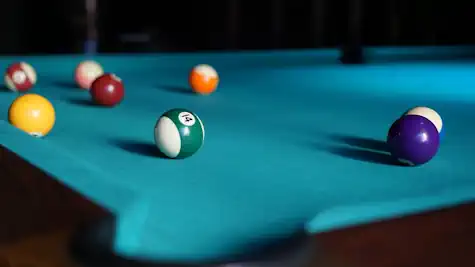
Bank Shots
A bank shot, or cushion shot, is when a ball is hit off of the railings of the table to make a shot. Because you are aiming for a specific area of the table, your geometry skills must be spot-on. Bank shots are not just for scoring; they are also great for defensive play, where you can place a ball near your opponent’s pocket.
Cue Ball Control
The ability to control the trajectory of the cue ball is critical. Good cue ball control allows you to maintain position for the next shot, break up clusters of balls, and hide your cue ball after a shot, making it difficult for your opponent to get a good next shot. Spend time mastering different levels of English and spin on the cue ball.
Defensive Strategies
Just as in chess, the mark of a skilled One Pocket player is the ability to play defense well. This may involve blocking the path to the opponent’s one pocket shots, hiding the cue ball behind balls, or leaving your opponent with difficult shots. Think three moves ahead and anticipate your opponent’s counter-moves.
Reading the Table
The layout of the balls is perhaps your most valuable source of information. When you can read the table—that is, understand where balls are likely to end up after certain shots, and how you can capitalize on that—you are well on your way to playing One Pocket at a high level. Take note not only of the current layout but where the balls are likely to move and where they might end up.
Tips for Beginners
Starting out in One Pocket can be challenging, but with these tips, you will make significant strides in your game.
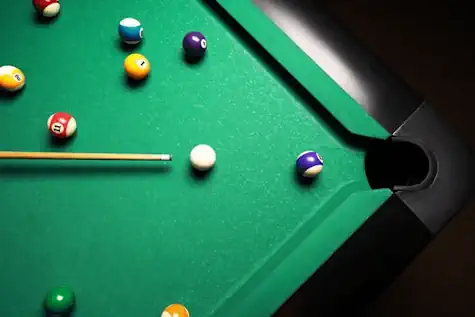
The Right Stance and Grip
A good stance and grip are the foundation of a successful shot. Your feet should be shoulder-width apart, and your body low over the shot. Your grip should allow for a smooth and straight stroke. Experiment with various grips to find one that is comfortable yet effective.
Aiming and Alignment
Proper aiming is crucial in One Pocket. Determine the correct line of the shot and make sure your cue and bridge are aligned with that line. This will require practice and potentially adjusting your stance and bridge position for each shot.
Patience and Planning
In the fast-paced world of pool, One Pocket stands out for its slower, more strategic play. Be patient and plan your shots carefully. Do not be afraid to aim for strategic placements over immediate scoring opportunities.
Common Mistakes to Avoid
Even the best players make mistakes, but knowing common pitfalls can help you avoid them. Here are some mistakes often made by beginners:
Overconfidence
A straightforward shot to score can often lead to overconfidence. Always reassess the lay of the table and consider the strategic value of a shot.
Poor Defense
Many beginners focus on scoring without paying attention to where they leave their opponent. Remember, defense is just as important as offense, often more so.
Ignoring Where the Balls Go After a Shot
Each shot changes the lay of the table. Not paying attention to where the balls are likely to go after a shot can leave you without a shot or, worse, with a bad shot.
Practice Drills
The old maxim, “practice makes perfect,” holds true in the world of One Pocket. Here are some practice drills to help you improve your skills:
Straight-Shot Drill
Practice pocketing multiple balls together in a straight line. This drill will sharpen your aim and develop a straight stroke, which is invaluable in One Pocket.
Three-Ball Defense
Position three balls around your opponent’s pocket, and practice leaving the cue ball in a place that makes it hard for your opponent to make a shot. This will hone your defensive skills.
Position Play
Practice setting up the table in different configurations and plan out the sequence of shots that will pocket the most balls. This will help you with reading the table and strategic planning.
Conclusion
Mastering One Pocket Billiards is a challenge, but with dedication, practice, and an understanding of the game’s intricate strategy, you can elevate your play to an advanced level. Remember to be patient with your progress and enjoy the strategic and tactical beauty of the game.
Whether you’re playing with friends at a local bar or competing in a tournament, the skills you develop by playing One Pocket will enhance your overall billiards game and provide countless hours of mental stimulation and enjoyment. Keep practicing, learning, and challenging yourself, and above all, have fun with the game.
Frequently Asked Questions (FAQs) about One Pocket Billiards
What is One Pocket Billiards?
One Pocket is a unique variant of pool where each player is assigned one of the corner pockets at the end of the table. The objective is to legally pocket 8 out of 15 object balls into the assigned corner pocket. It emphasizes strategy and skillful play over simply pocketing balls.
How long does a typical game of One Pocket last?
The duration of a One Pocket game can vary widely depending on the skill level of the players and the strategies employed. A game can last anywhere from 15 minutes to over an hour.
Is One Pocket suitable for beginners?
While One Pocket has a reputation for being more strategic and potentially more challenging than other pool games, beginners can still enjoy and learn from it. It’s an excellent way to improve skills such as cue ball control, shot planning, and defensive play.
Can One Pocket be played on any pool table?
Yes, One Pocket can be played on any standard pool table. No special equipment is required apart from what is typically used in a game of pool.
What are the most important skills to develop for One Pocket?
Key skills for One Pocket include cue ball control, bank shots, safety play, strategic defense, and the ability to read the table. Mastery of these skills enables players to control the game and make strategic plays.
How can I improve my One Pocket game?
Improvement comes with practice and study. Practicing drills, playing against opponents of varying skill levels, and watching matches to understand different strategies can significantly enhance your game. Additionally, focusing on and learning from your mistakes is crucial for development.
Are there any resources you recommend for learning more about One Pocket?
Numerous resources are available for those interested in improving their One Pocket game. Books, online tutorials, forums, and instructional videos can provide valuable insights and techniques. Joining a local pool league or club where One Pocket is played is also an excellent way to learn and practice the game.
By addressing these FAQs, players new and old can gain a deeper understanding of the rules of One Pocket Billiards, enhancing their appreciation and performance in this strategic and rewarding pool game variant.
